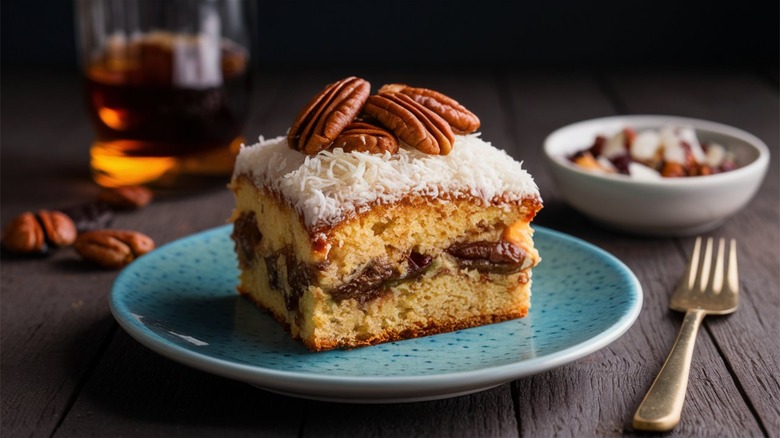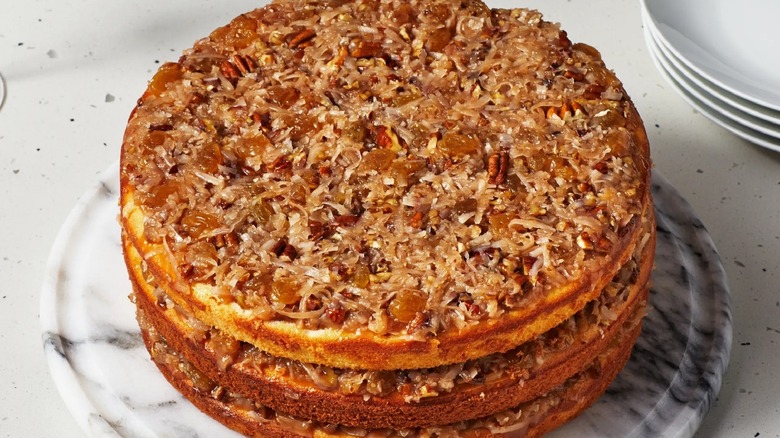How This Classic Southern Cake Was Popularized By To Kill A Mockingbird
There is nothing like a quintessentially Southern cake that comes with an entire story behind its fame and genesis. In the case of the Lane cake, its origin story is just as captivating as its rise to popularity. Harper Lee wrote "To Kill a Mockingbird" in 1960 and in it, she gave the Alabama cake a cameo that would keep it on the tongues and plates of many for years to come.
The novel makes reference to the cake when Atticus' sister, Miss Maudie, comes to stay with the family. The reference highlights how Miss Maudie gate keeps her special recipe and isn't shy when pouring in the liquor. The young protagonist, Scout, mentions that "Miss Maudie Atkinson baked a Lane cake so loaded with shinny it made me tight".
The invention of Lane cake came from the mind of Emma Rylander Lane from Alabama. Rylander presented the cake in a baking competition in Columbus, Georgia in the late 19th century. Originally it was called "Prize cake" (which is fitting since it won the judges over and landed first place), but Rylander was later persuaded to name the cake after herself, adding to her legacy. Lane cake is famous for its moist and spongy texture, creamy frosting, and jam-packed interior. Typically, the layer cake's filling is made with raisins, pecans, cherries, coconut, and a splash of brandy.
What to know about Lane cake today
After "To Kill a Mockingbird" skyrocketed to fame, Lane cake continued to draw the attention of skilled and curious bakers. In March 1966, Southern Living included a recipe for the cake in its second issue. These days, the treat is enjoyed throughout the South, especially in Alabama. It was even appointed as the state's official cake. Recognized as a special occasion cake (perhaps since it demands time and patience to create), this is a dessert mostly served at wedding receptions, celebrations, and family gatherings. The light and nutty coconut flavor makes it a favorite for all times of year.
Emma Rylander Lane also documented the recipe in her 1898 cookbook "Some Good Things to Eat," where she left some sprinkles of golden wisdom for expertly crafting this layered cake. One piece of advice notes that the cake tastes better a few days after being made. This helps explain why whiskey is a cornerstone of the recipe since it aids in preservation. While the cake does traditionally call for whiskey, it can easily be made with a booze-free substitute like grape juice or apple cider.


